AO Edited
Site of the Porteous Riots
The location of a citizen uprising that led to a gruesome act of mob justice.
Over the centuries, Edinburgh has seen its fair share of crime and murderous plots. From the conspiracy to do away with the husband of Mary, Queen of Scots, Lord Darnley in 1567— to the serial killer duo Burke and Hare. One particular event involved citizens uprising against governmental officials that resulted in a truly heinous act. The author Walter Scott would use these events as the backdrop of his seventh novel The Heart of Midlothian.
In 1736, a series of events culminated with several people being injured, shot, and one public official meeting a nasty end. It all began in the spring, when a trio of prisoners were scheduled to be executed in the Grassmarket area for smuggling. One of the aforementioned, William Hall, had his sentence commuted. The other two, George Robertson and Andrew Wilson were condemned to death by hanging. As was customary, the accused duo were allowed to attend church at St. Giles prior to execution. Robertson was able to escape while Wilson created a diversion. Unfortunately, the latter was unable to make his escape.
The condemned Wilson had many supporters who gathered at the site of the execution and began to cause a ruckus. It was the job of the King’s Guards, the local authorities of the time, to quell this unruly mob. An order was given by Captain John Porteous to fire a few warning shots over the heads of the heated crowd. Unfortunately, several innocent bystanders, who were watching from the windows above were severely injured. This sent the masses into an uncontrollable frenzy. Another order was given to fire directly at the crowd.
When the smoke cleared and temporary order restored, six civilians lay dead. Captain John Porteous was charged with murder and held at the aforementioned prison. In the time it took for the trial to commence, citizens feared that he would be granted clemency and decided to take matters into their own hands.
On the evening of September 7th, a group of disguised conspirators walked into The Tollbooth Prison and escorted Porteous, who was hiding in a chimney, out into the unscrupulous hands of the waiting mob that numbered in the thousands. It has been said that the group broke into a local shop to procure the cord necessary for the impending deed. It’s also believed they left payment as not be charged with theft. The mob then used to the rope to lynch Porteous from a signpost in the street. It took three attempts to exhaust the life of the poor man. All the while he was stripped of his clothing, beaten about the head and shoulders, and even set alight.
Know Before You Go
Hunter's Close is located in the southeast end of the Grassmarket area, it's opposite the place designated for public executions. This is marked by the memorial tablet dedicated to the Covenanters, (a round stone with a red "X") and a stone depiction of a gibbet.
Captain John Porteous was buried in the nearby Greyfriars Kirkyard. His unassuming grey headstone is to the right of the arched entryway of the Flodden Wall. It reads: "John Porteous, a Captain of the Edinburgh City Guard murdered 7th September 1736, All passions spent 1973."
It has been speculated that the reason for the two separate dates and odd phrasing at the end has to do with the fact that the headstone was replaced. The saying is in reference to the quelling of emotions that gave rise to the killing.

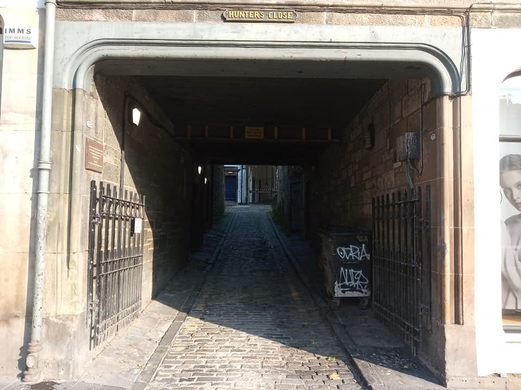

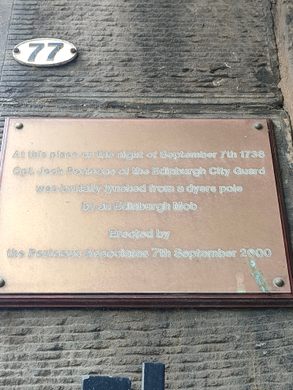
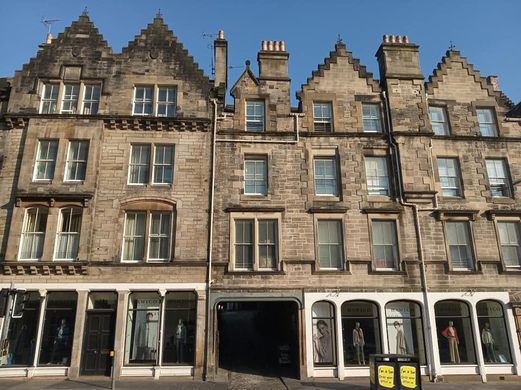
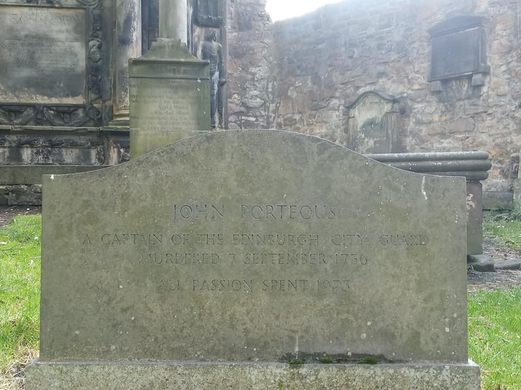

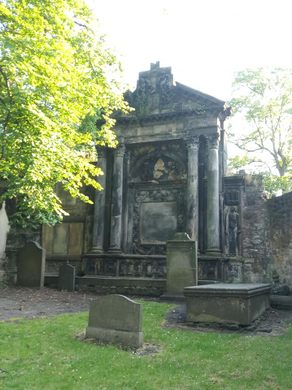
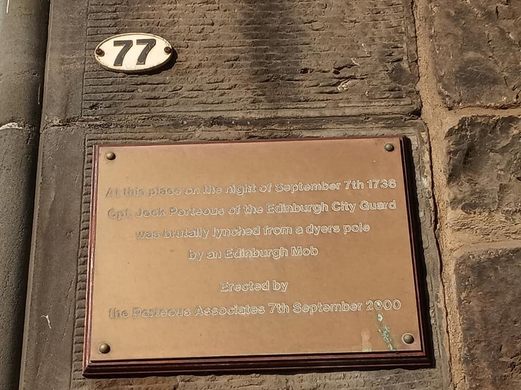
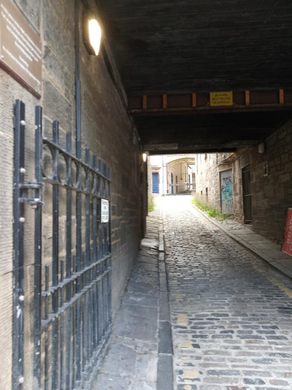


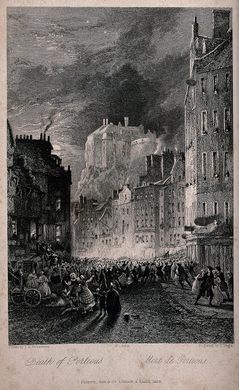













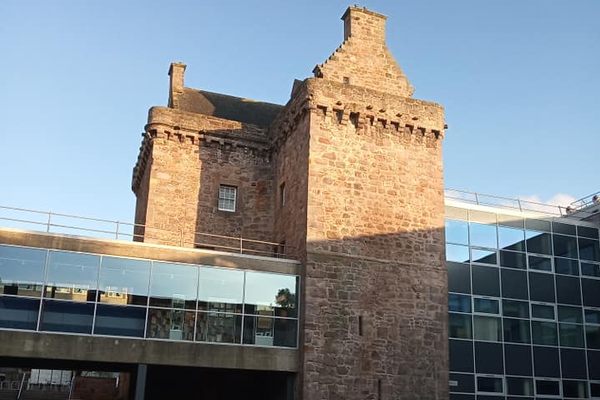

Follow us on Twitter to get the latest on the world's hidden wonders.
Like us on Facebook to get the latest on the world's hidden wonders.
Follow us on Twitter Like us on Facebook